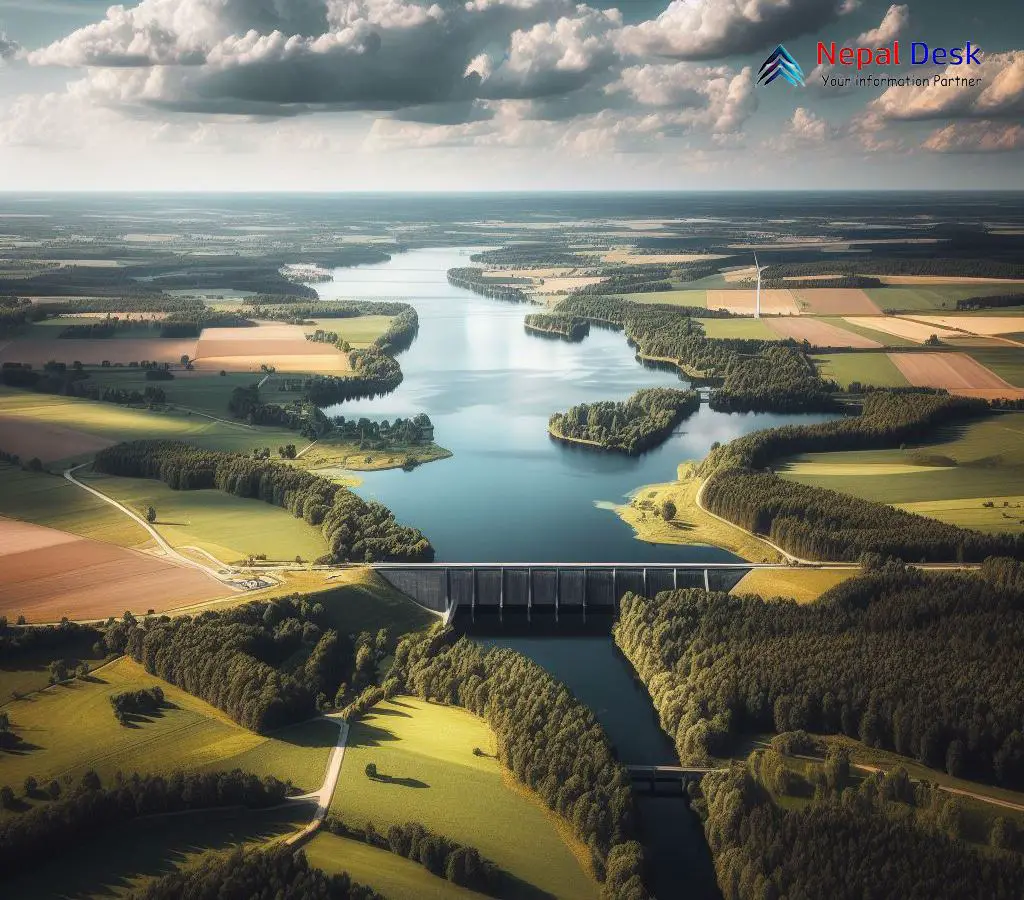Nepal-India agrees Saptakoshi Dam Height to Address Flooding Risks
Published Date

Published Date
Nepal-India agreement to lower Saptakoshi High Dam's height to address flooding concerns and local people fears & potential impact on power generation.
⏱ 5 min read
During the 17th session of the Nepal-India Joint Team of Experts, which was created to investigate the Saptakoshi High Dam Multipurpose Project, an agreement was reached in eastern Biratnagar, Nepal between October 9-11. The Ministry of Energy, Water Resources and Irrigation stated that the two nations have decided to lower the dam's height and change its re-regulating dam location. Eastern Nepal locals have long protested the project due to concerns about widespread flooding of human settlements and farmland.
Chiranjeevi Chataut, director general of the Department of Electricity Development and leader of the Nepali team, informed that they had agreed to decrease the dam's height from around 337 meters to 304.8 meters. Chataut explains that this reduced dam height will help alleviate people's fears about flooding since it decreases the inundation area upstream. However, this change also means that the proposed power plant's generation capacity will be lower, dropping from 3,000 MW to around 2,200-2,300 MW.
In addition to these changes, the ministry's statement noted that both sides have agreed to move the proposed re-regulation barrage about 4km upstream from its initially proposed location at Sisauli, Udayapur district. Furthermore, Chataut mentioned that plans for digging two large canals for Indian irrigation facilities were discarded to minimize losses to Nepal's fertile lowlands in Tarai. However, a study will explore how more Nepali lands can benefit from irrigation after constructing the high dam. The original plan included irrigating 546,00 hectares in Nepal and 976,000 hectares in India.
The Ministry also revealed that both parties agreed to develop a detailed project report (DPR) for the high dam project within 30 months. The DPR will focus on geology, environmental impact assessment, rehabilitation and resettlement efforts as well as flood benefits. This decision follows the failure of a project office established in Biratnagar to perform fieldwork like drilling, hydrological study, and environmental impact assessment for the multipurpose project due to continuous local protests.
To address these protests, Nepal has long proposed reducing the dam height, which India finally agreed to. The transboundary Koshi River, referred to as the "Sorrow of Bihar," has been causing significant flooding in the Indian state annually. India is also interested in harnessing the river for irrigation purposes.
Anup Upadhyay, Nepal's former energy and water resource secretary, praised this latest agreement, calling it a positive development that may pave the way for smoother cooperation between both parties. He believes it was a sensible choice since it would lessen the impact on fertile Nepali land and the risk of induction at dam hydropower plants upstream.
Several hydropower projects are being developed or planned in Saptakoshi's tributary rivers like Tamor Storage Hydroelectric Project, Dudhkoshi Hydropower Project, and Sunkoshi 3 Hydropower Project alongside the Sunkoshi Marin Diversion Multi-Purpose Project. Upadhyay maintains that lowering the dam height makes more sense given these projects could help regulate water distribution in the Saptakoshi River without constructing an initially proposed high dam.
Upadhyay adds that following this agreement, both sides must work to reassure local residents about allowing joint field office operations to continue. He feels that offering an appropriate compensation package could persuade locals to accept high dam construction. However, some stakeholders and activists remain opposed to the high dam project due to concerns about its benefits for Nepal or India and its potential impacts on fertile land, the environment, and indigenous populations.
"The primary objective of the project appears to be benefiting India more than Nepal," remarked Surya Nath Upadhyay, former water resource secretary of Nepal. Upadhyay, who has also been a member of the Eminent Persons Group established by both Nepal and India to tackle bilateral relations issues, expressed his opposition to the project due to its minimal advantages for Nepal compared to India. "The commitments made during the construction of the existing Koshi barrage have not been met, and there's significant doubt regarding the realization of promised benefits for Nepal from the proposed high dam," he added.
On the other hand, Anup Upadhyay, former energy and water resources secretary, stated that efforts have been made to increase the benefits for Nepal. However, he admitted that persuading the Nepali public about these advantages would be a difficult task due to previous persistent opposition. "There's a need to conduct a public hearing about the project," Upadhyay suggested. "To prevent the project from becoming a political issue, it's essential to build trust with political leaders in light of the recent agreement."
